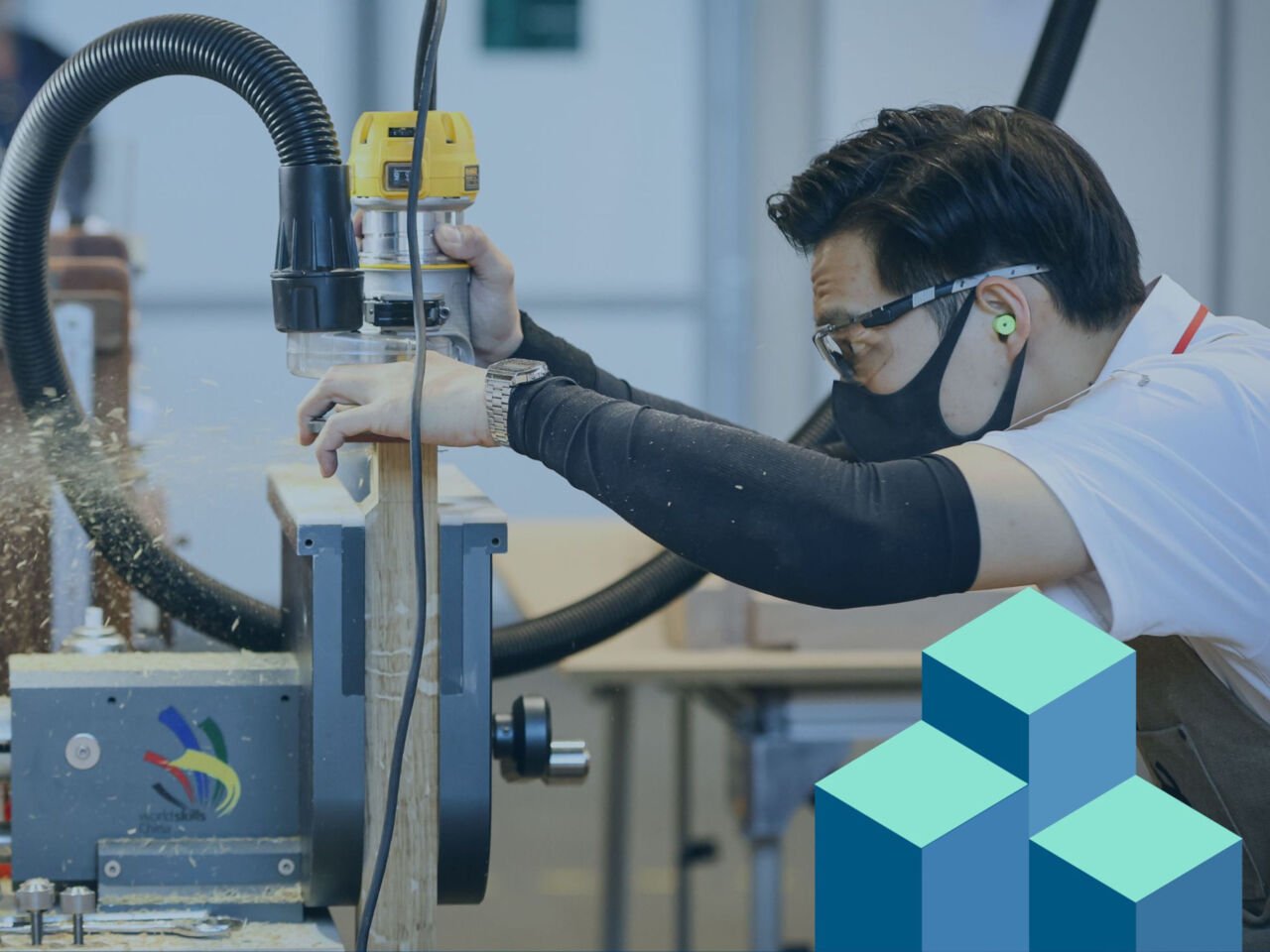18 September 2025
Spotlight on… Joinery
This month, WorldSkills turns the spotlight on Joinery, a discipline at the intersection of tradition, innovation, and sustainability.

You probably walk through a door, open a window, or climb wooden stairs many times a day, yet how often have you stopped to consider the intricate skill and knowledge that goes into crafting these essential elements? This is the often-overlooked art of joinery.
As Dion Iori, Joinery Skill Competition Manager, explains, the differences lie in scale and scope: “Carpenters build homes. Joiners make windows, doors, and stairs. Cabinet-makers produce furniture – tables, chairs, cabinets.”
A staple of the woodworking trades, joinery occupies an increasingly vital place within the push for sustainable construction around the globe, with substantial skill shortages being reported in different regions. In Europe, for example, 17 of 29 countries report shortages in the occupation, with 24 per cent of these countries describing the situation as very severe (European Labour Authority, 2025).
Dion highlights two features that make joinery unique: precision and its embedded focus on sustainability. “Sustainability in the skill of joinery has been present for quite a long time,” he says. “In joinery and wood trades, materials have always been sold in linear lengths. When designing a project – whether it’s a door, a window, or a staircase – industry professionals work within those section sizes to minimize waste and reduce the environmental footprint.” By thinking carefully about the dimensions of timber available, joiners reduce waste before a single cut is made.
This principle extends to the use of offcuts, which are rarely discarded. “Around the world, there’s been a growing adaptation to reuse timber waste. Offcuts are now repurposed into products like bricks and pellets for heating homes or factories. Some factories even use waste timber in furnaces to warm up their buildings, especially in colder regions.” Chips and smaller by-products also find new life in materials like particle board, MDF, and plywood. As Dion puts it, “The idea is to maximize every part of the timber, so it benefits other sectors of the trade.”
At WorldSkills Lyon 2024, Joinery and Cabinetmaking shared one machine shop instead of each skill having its own. “This allowed us to reduce our machinery use by two-thirds, cutting down our environmental impact,” Dion recalls. All offcuts were collected and repurposed, and none went to waste.
The Competition also makes sustainability part of the assessment process. Dion explains, “We don’t want Competitors wasting timber, so in our marking scheme, if someone replaces a piece of material, they will be marked accordingly. Accuracy is a key part of our assessment. In our industry, we have a saying: ‘Measure twice, cut once.’ That principle is ingrained in our training from the start. It encourages tradespeople to be precise and consider the impact of their actions.” By following this, competitions have reduced waste from an industry standard of around 10 per cent to closer to 5 per cent.
Looking ahead to WorldSkills Shanghai 2026, Dion sees opportunities to further enhance the sustainability model introduced in Lyon, continuing the commitment to reducing environmental impact. “We’ll be sharing a machine shop again, but each skill will have exclusive use of their own machines. All machines will be located in one area to reduce the footprint and support the sustainability goals of the Competition.”